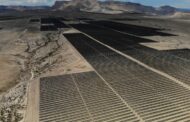Alaska’s Energy Story Has Utilities in the Driver’s Seat on Innovative Microgrids
By Peter Asmus
Alaska has long been associated with the discovery of oil and natural gas. These resources provided tremendous economic benefits for the 49th state, but because they were primarily an export opportunity, this resource wealth didn’t address residents’ own high energy cost burden. As glaciers melt and permafrost thaws, treasured species of fish such as salmon and crab decline, oil reserves wane and consumer energy bills continue to rise, Alaska is re-evaluating its energy future. The good news is that many rural Alaska communities are already leading the way towards a more sustainable energy future for the state.
Despite the legacy of oil and natural gas exploration associated with Alaska, renewable energy integration projects have sprung up in Alaska’s rural communities since the mid-1990s, not due to regulatory fiat but rather economic necessity and ingenuity. Alaska’s electricity costs are among the highest in the nation. This fact is linked to the remoteness of the largest portfolio of microgrids in the U.S., the majority of which had traditionally been heavily dependent on expensive and dirty diesel fuel. While there is no doubt the diesel generator is a workhorse technology across the globe in places without traditional grid infrastructure, availability and logistics linked to transporting diesel fuels prompted many rural Alaska utilities to turn to locally available renewable energy resources.
Alaska’s innovation to date has been fostered by 100 utilities serving fewer than 800,000 people (and a few of said utilities serve less than 100 people!) By contrast, some large private utilities in the continental U.S. serve more accounts than the entire population of Alaska. Alaska’s decentralized approach has fostered innovation out of necessity. Renewables simply make economic sense. But shifting to variable and weather-dependent renewables also requires integration ingenuity. The logistics of cold weather installations and ongoing maintenance in such harsh and remote environments remain a challenge today. In short, Alaska’s decentralized market has allowed individuals and communities to make their marks in a way that has not been replicated anywhere else. Lessons learned here carry broad implications across the globe.
Four Remote Utility Microgrids
I explore Alaska’s energy innovation in a forthcoming book to be published by the University of Alaska Press to be published early next year and will be discussing one of them – Cordova – at the upcoming Microgrid Knowledge conference in Dallas, TX on April 16th. Here are single paragraph snapshots of each of these four utilities exploring renewable energy alternatives to a sole reliance upon diesel generators in microgrids not interconnected with a traditional transmission network:
- Cordova, a fishing port at the mouth of the Copper River unconnected to any roads and often blasted by wind and rain, is home to one of the most innovative utilities in the world, Cordova’s energy history encapsulates the rollercoaster nature of energy system evolution in Alaska. The utility moved from 100% hydroelectricity to 100% diesel generation and now runs a hybrid hydro/battery/diesel system. Last year, an edge data center was installed by Greensparc which runs off of excess run-of-the-river hydro (see photo below) and provides the digital infrastructure to not only improve overall efficiency of the microgrid but a myriad of benefits to the local community, a leader provider of salmon to the lower 48.
- Kotzebue was an early adopter and innovator in small wind technology in Alaska. It is now also integrating solar energy into its microgrid, dispelling the myth that solar energy does not make sense in the Arctic. Yes, winters may offer few hours of daylight in December, but the flipside is that the solar resource in the peak of summer features some of the highest capacity factors on the planet. The emergence of cost-effective energy storage has more communities in Alaska turning to the sun.
- Speaking of energy storage, one of the most impressive microgrids in the world has been installed at Kodiak Island, the second largest island in the U.S. This microgrid runs virtually completely on renewable energy – wind and hydro – thanks to a tired approach to energy storage that includes flywheels, lithium-ion batteries and a traditional hydroelectric dam. The utility’s wind farm consists of 1.5 MW GE wind turbines (see below.)
- Perhaps the most evocative community story is that of AlexAnna Salmon of Igiugig, who leads a utility that serves just 70 people or so. Viewing the world’s energy challenges through the eyes of an Indigenous woman whose community is blazing trails with tidal power that draws clean electricity from a river that has sustained this small community for millennia is truly eye-opening.
The Railbelt grid (see map below), the only major transmission system in the state that serves two of the largest urban centers in Alaska (Anchorage and Fairbanks), lags behind the remote communities referenced above in renewable energy adoption. Because Railbelt customers enjoy lower cost electricity, utilities serving the Railbelt haven’t had the same financial pressure to diversify and innovate as those serving rural customers. Railbelt utilities have not yet embraced the types of market reforms that are revolutionizing relationships between utilities and their customers in the rest of the U.S. and other parts of the world.
Nevertheless, legislation passed last year and a study on pathways toward decarbonization speak to how these utilities – which also each run a microgrid that provides all energy services for each of their customer bases – are playing catch-up with their rural utility counterparts. The Alaska Center for Energy and Power has published several scenarios for how the Railbelt utilities can shift away from its current dependence upon natural gas supplies that are dwindling to a mix of cleaner and more diverse supplies, including emerging options such as hydrogen and tidal power.
Don’t Take No for an Answer
Alaskans are survivors. Bootstrap innovation comes naturally – and out of necessity. If there is a will, there is a way.
From communities such as Cordova – which have leveraged underground power lines to increase both resilience and efficiency and tapped run-of-the-river hydro turbines to provide frequency regulation services – Alaskans figure out how to get things done, often without precedent. Kotzebue emerged as a global leader on small wind turbine technology since so few other U.S. states or countries were pushing the technology forward. Kodiak Island pioneered new use cases for flywheels by directly linking this power storage technology to a huge crane that previously wreaked havoc with the microgrid’s stability. The tiny utility in Igiugig took on the task of validating tidal technology in a river which provided this community with its livelihood – salmon – for centuries. They leaned on their indigenous knowledge to guide the installation and ongoing operations. You don’t find that kind of bold innovation in too many places throughout the world. Extreme temperatures and tremendous isolation can sire radical innovation out of pure and simple necessity. This is the essence of why Alaska thrives in the realm of bootstrap solutions to not just energy challenges but just about everything.
The entire population of Alaska would be served by a single utility in other parts of the world or the U.S. This fragmented and decentralized energy market in Alaska has allowed individual utilities to forge their own path, especially remote disconnected microgrid utilities. One of the biggest surprises about Alaska that I discovered while writing this book is that the remote rural regions have led the charge on sustainable technology innovation rather than the larger, grid-connected urban utilities. It is true many of the smallest rural utilities still rely upon antiquated diesel generator systems. Yet growing numbers are plowing new ground without the benefit of traditional transmission and power sharing infrastructure that is commonplace in the Lower 48.
Remember, Alaska is larger than California, Texas and Montana combined. With a population of less than three-quarters of a million people, it is the classic “be a big fish in a small pond” kind of place. In other words, a single person can make a huge difference in a state where many of its citizens spend three to four times the national average annual budget on energy. This forthcoming book tells the story of some of these big fish.
More Work Still Needs to be Done
For some observers, such as Ky Holland, a university professor, local elected official and entrepreneur coach for over 70 Alaska-based start-ups, a much more fundamental shift needs to take place in Alaska for it to reach its full potential as a global energy powerhouse. Consider his eloquent analysis and summary below about what Alaska needs to do next to carve out a global brand on energy innovation:
The most critical shift Alaska must undergo to realize its full potential as a global energy policy and technology innovator is a fundamental transformation in its identity and strategic vision. For decades, Alaska has been defined by its vast reserves of fossil fuels — oil and natural gas that have powered not only the state but also the nation. This legacy has shaped Alaska’s economy, politics, and societal values. However, to lead in the new era of global energy innovation, Alaska must redefine itself as a source and hub of sustainable clean energy, decarbonization technologies, and environmental stewardship.
This shift requires moving beyond the traditional reliance on extraction-based industries and embracing a forward-looking vision that prioritizes renewable energy, technological innovation, and climate leadership. Alaska must leverage its abundant natural resources — not just oil and gas, but also wind, solar, tidal, and geothermal energy — into a new kind of energy economy. This means fostering an ecosystem of innovation, where public policy, private enterprise, and academic research converge to develop cutting-edge technologies that can be exported globally.
Many decarbonization technologies failed in Alaska, often due to extreme cold temperatures but sometimes due to logistical challenges, novel experiments and devices offered up by firms that ultimately failed to sustain themselves. Alaska looks a lot more like the rest of the world than the rest of the U.S. The lessons learned in Alaska are perhaps most relevant to Africa, the Asia Pacific and Latin America, places where traditional utility grid networks are limited.
From logistical challenges due to lack of roads to the need for appropriately scaled technologies that can be managed by local labor, Alaska remains a testing ground for new innovative technologies. If it can work in Alaska, it can work anywhere. The state’s microgrid portfolio has more diverse resources – wind, solar, geothermal, biomass and multiple forms of hydro technologies – than any other place in the world. All have found a place in the broad Alaska landscape.
Perhaps rural Alaskan utilities can inspire their Railbelt counterparts. And in the process, they can realize a resilient, sustainable and affordable energy system that can inspire and inform the rest of the world.
Peter Asmus is Executive Director of the Alaska Microgrid Group and serves as Senior Advisor, Microgrid Strategy and Thought Leadership, for the Alaska Center for Energy and Power. He is also a senior advisor with Clarum Advisory. www.peterasmus.com












